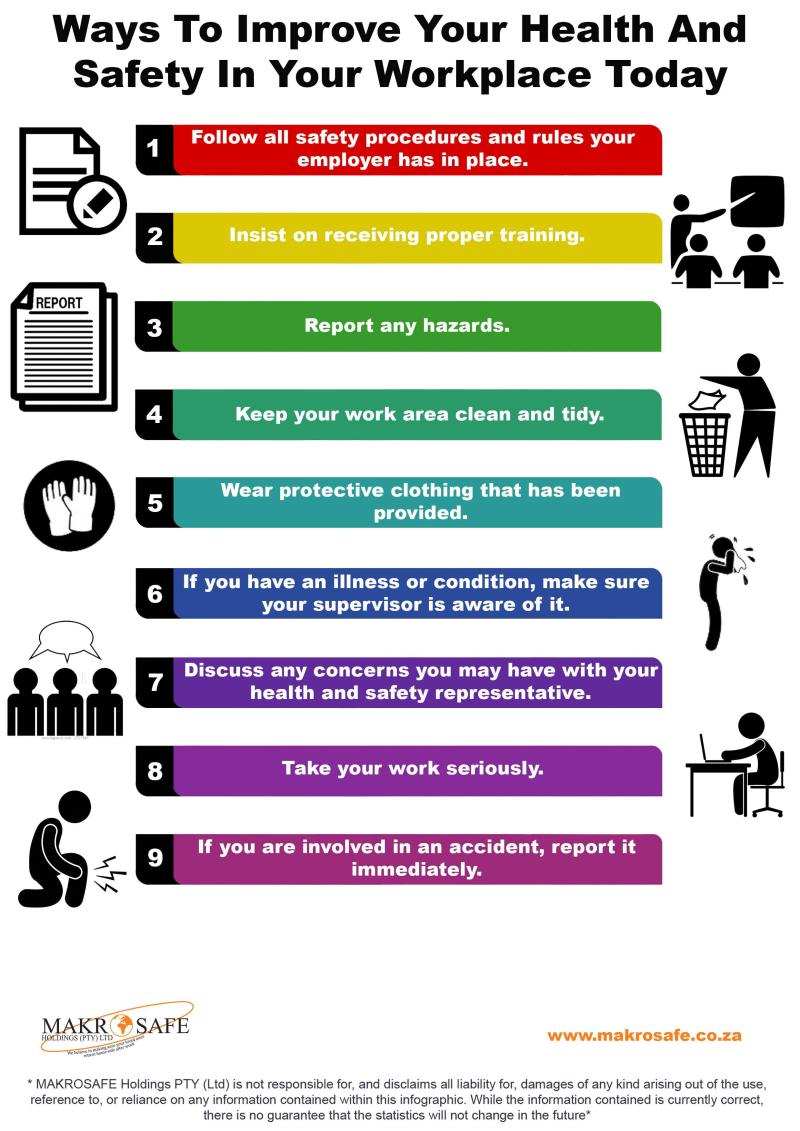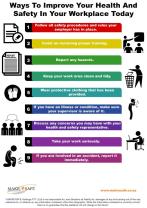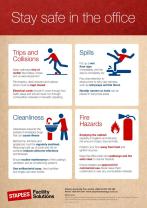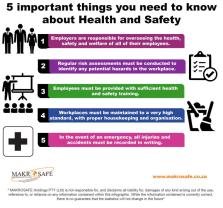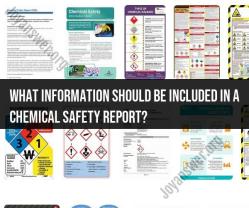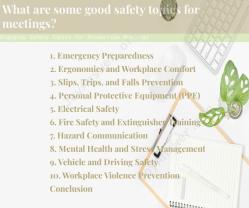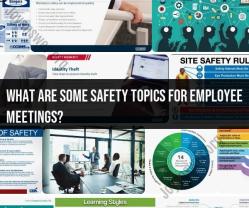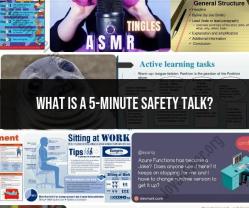How to encourage safety at work among your employees?
Creating a safe workplace involves a combination of policies, practices, and a positive safety culture. Here are strategies to encourage safety at work among your employees:
Establish Clear Safety Policies:
- Develop and communicate clear safety policies and procedures. Ensure that every employee is aware of the rules and expectations regarding safety in the workplace.
Provide Training and Education:
- Conduct regular safety training sessions for all employees, including new hires.
- Cover topics such as emergency procedures, proper use of equipment, and potential hazards specific to your industry.
Lead by Example:
- Demonstrate a commitment to safety at all levels of the organization, from leadership to frontline employees.
- When leaders prioritize safety, it sends a powerful message that safety is a core value.
Encourage Open Communication:
- Create an environment where employees feel comfortable reporting safety concerns or incidents without fear of reprisal.
- Implement an anonymous reporting system if needed to encourage open communication.
Involve Employees in Safety Programs:
- Include employees in the development and implementation of safety programs.
- Establish safety committees that involve representatives from various departments to address specific safety issues.
Recognition and Rewards:
- Recognize and reward employees for safe behavior and practices.
- Implement safety incentive programs to motivate employees to actively participate in maintaining a safe workplace.
Regular Safety Meetings:
- Conduct regular safety meetings to discuss current safety issues, share best practices, and address any concerns.
- Keep these meetings focused, engaging, and relevant to the specific needs of the workplace.
Provide Adequate Safety Equipment:
- Ensure that employees have access to and are trained to use the necessary safety equipment for their tasks.
- Regularly inspect and maintain safety equipment to ensure its effectiveness.
Implement Safety Protocols for New Processes:
- Before introducing new processes or equipment, assess the associated safety risks and implement protocols to mitigate those risks.
- Train employees on the new safety measures.
Emergency Response Planning:
- Develop and regularly review emergency response plans for various scenarios, such as fire, natural disasters, or chemical spills.
- Conduct drills to ensure that employees are familiar with emergency procedures.
Promote Work-Life Balance:
- Encourage a healthy work-life balance to prevent fatigue and stress, which can contribute to workplace accidents.
- Provide support programs or resources to help employees manage stress.
Continuous Improvement:
- Foster a culture of continuous improvement by regularly evaluating and refining safety processes.
- Solicit feedback from employees on ways to enhance safety measures.
Use Visual Reminders:
- Place visual reminders, such as safety posters and signs, in prominent areas to reinforce key safety messages.
- Use visual cues to remind employees of proper procedures and safe practices.
Regular Safety Inspections:
- Conduct regular safety inspections to identify and address potential hazards.
- Encourage employees to report any safety concerns they observe during their daily tasks.
Celebrate Safety Milestones:
- Celebrate safety milestones, such as achieving a certain number of accident-free days.
- Recognize and reward teams or individuals who contribute to maintaining a safe workplace.
Investigate Incidents Thoroughly:
- When incidents occur, conduct thorough investigations to understand the root causes and implement corrective actions.
- Use incidents as learning opportunities to improve safety measures.
Promote Mental Health Awareness:
- Include mental health awareness in your safety programs.
- Provide resources and support for employees facing mental health challenges, as mental well-being is integral to overall safety.
By incorporating these strategies into your workplace culture, you can foster a safer environment and encourage employees to prioritize safety in their daily activities. A proactive and comprehensive approach to safety benefits both employees and the overall success of the organization.
Building a Shield of Safety: Tips and Tools for Fostering a Culture of Safety
Cultivating a safety-conscious culture in the workplace goes beyond ticking boxes and compliance. It's about instilling a shared value for safety, where everyone actively embraces its importance and participates in maintaining a safe environment.
1. Promoting and Encouraging a Safety Culture:
- Leadership Commitment: Set the tone from the top. Leadership must visibly prioritize safety, actively participate in safety initiatives, and demonstrate unwavering commitment to creating a safe work environment.
- Open Communication: Encourage open dialogue and feedback around safety concerns. Employees should feel empowered to report hazards, near misses, and suggestions without fear of repercussions.
- Employee Engagement: Actively involve employees in shaping the safety culture. Form safety committees, conduct regular safety walks together, and encourage peer-to-peer safety discussions.
- Training and Education: Provide ongoing safety training tailored to specific roles and risks. Continuously update procedures and knowledge to address new hazards and changing regulations.
- Positive Reinforcement: Acknowledge and reward safe behavior. Publicly recognize employees who demonstrate safety commitment and encourage others to follow suit.
- Lead by Example: Managers and supervisors must consistently follow safety rules and procedures, setting a positive example for the entire team.
2. Strategies and Initiatives:
- Safety Talks & Toolbox Talks: Regular short talks on specific safety topics or hazards raise awareness and keep safety at the forefront of everyone's mind.
- Safety Incentive Programs: Implement well-designed programs that reward safe work practices and behaviors. Examples include recognition awards, safety contests, or bonus points for hazard reporting.
- Safety Campaigns & Events: Organize engaging safety campaigns, awareness weeks, or fun events to promote safety, build team spirit, and generate excitement about safety initiatives.
- Invest in Safety Equipment: Provide and maintain high-quality personal protective equipment (PPE) and ensure proper training on its use and care.
- Conduct Hazard Assessments: Regularly identify and assess potential hazards in the workplace and implement necessary control measures to mitigate risks.
- Emergency Preparedness: Develop and regularly practice emergency response plans for various scenarios like fires, natural disasters, or medical emergencies.
3. Training and Incentives:
- Effective Training Programs: Comprehensive training programs that go beyond basic compliance training are crucial. Interactive sessions, scenario-based learning, and ongoing refresher courses can enhance engagement and knowledge retention.
- Tailored Training: Training should be specific to the tasks and risks involved in each job role. Providing targeted training ensures employees understand the hazards they face and how to work safely.
- Incentive Programs: Well-designed incentive programs can effectively encourage safe behavior. Rewards should be meaningful and tied directly to positive safety outcomes, not just accident-free periods.
- Safety Recognition Programs: Publicly recognize and reward employees who consistently demonstrate safe practices. This promotes positive reinforcement and encourages others to prioritize safety.
Remember, building a strong safety culture is an ongoing process. By employing these strategies, training programs, and incentives, you can empower your employees to take ownership of safety, creating a positive and healthy work environment for everyone.
I hope this information helps you build a shield of safety in your workplace!
